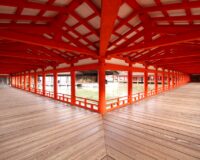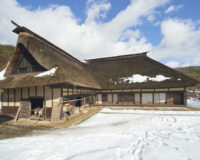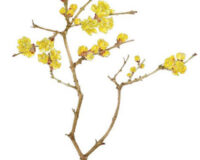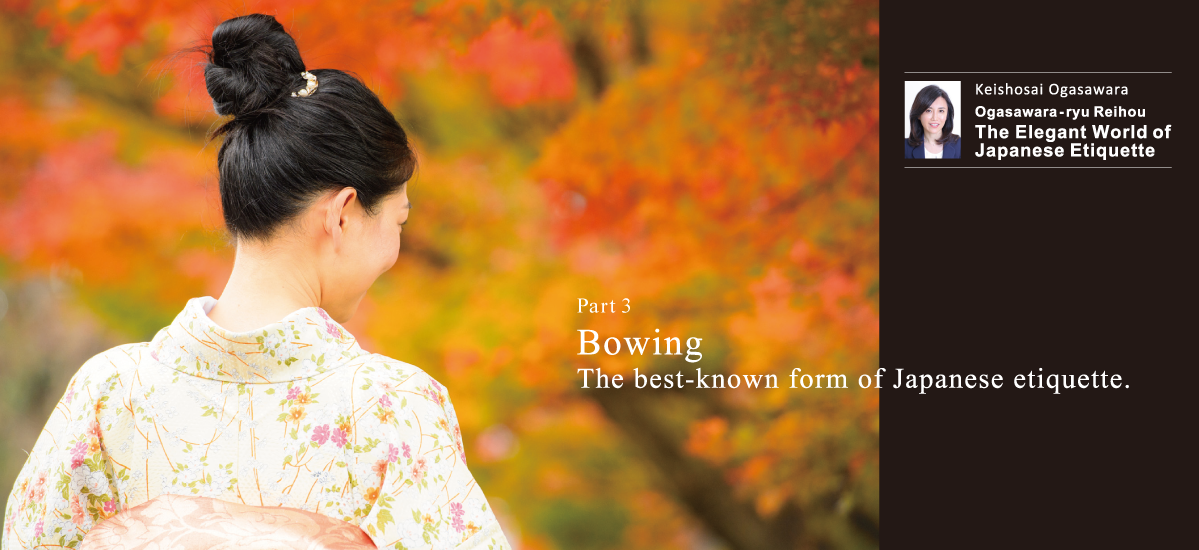
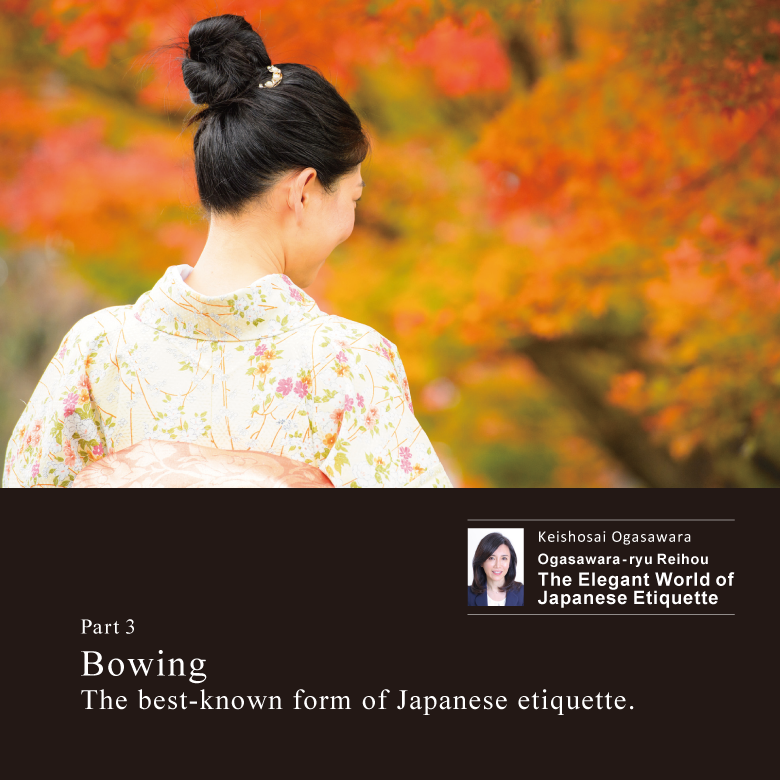
In the Ogasawara-ryu Reihou school of etiquette, the spirit of courtesy and consideration for others is valued above all else. This spirit has long been expressed through manners and gestures. Manners enable men and women to conduct themselves with dignity and refinement, whether in the workplace, out in public, or during ceremonial occasions. This time we look at bowing, the cornerstone of Japanese etiquette.
Text : 小笠原敬承斎 Keishosai Ogasawara / Illustrations : Aso Yuriko / English Version : Judy Evans
Keyword : Japanese Etiquette / Bowing
Bowing. The best-known form of Japanese etiquette.
There are two broad ways of bowing, ritsurei (bowing while standing) and zarei (bowing while seated/kneeling). We use a range of standing bows for different purposes in our modern lives and that is what we’ll look at in this article.
Readers will most likely be aware that we often talk about the “angle” of a bow, in terms of degrees. For instance, with an informal bow we bend forward from the hips to an angle of 15 degrees, while a formal bow ranges between 30 and 45 degrees. However, I doubt that many of us actually think about the angle of our bow while we are greeting someone. Bowing is a natural expression of one’s feelings. The more appreciative (or apologetic) one feels towards someone else, the deeper the bow naturally becomes.
Having said that, knowing how deeply we are bowing allows us to better and more precisely express our intended sentiments. In this article we’ll touch on the three types of standing bow, and how to know how deeply we are bowing, using the position of our fingertips.
A standing bow starts with the correct standing posture. Place your feet together, heels and toes lined up (men may stand with their feet a couple of inches apart). Straighten your back without letting your chin, chest or backside protrude – as if there were a thread attached to the top of your scalp, pulling you gently taller. Allow your arms to rest naturally at your sides, hands open and palms in, fingers together.
As you bow, it is important to keep the spine and neck aligned, without allowing the head to fall forward. Also, don’t be tempted to bend your head back up or to try to maintain eye contact. Imagine a straight line running up your spine and into your neck.
Mastering the three types of bow
<会釈> Eshaku – Informal Bow
An informal bow is used in situations such as bringing tea for a guest or entering and leaving a room. Keeping your back straight, bend from the hips just enough to bring both palms to the front of your thighs.
<浅い敬礼> Asai Keirei – Shallow Formal Bow
The shallow formal bow is used frequently in daily life, particularly for greetings and farewells. Keeping your back straight, bend from the hips enough that your fingertips reach about halfway down the front of your thighs.
<深い敬礼> Fukai Keirei – Deep Formal Bow
The deep formal bow is often used for expressing gratitude and for apologising. Keeping your back straight, bend from the hips so that your fingertips come to just above your knees.
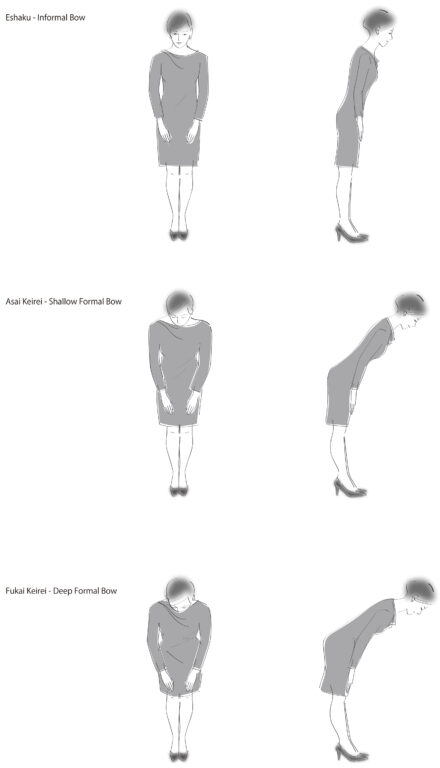
A word about breathing
The way you breathe is important when bowing. Breathe in as you bend forward. Breathe out when you finish bending forward. Breathe in again as you straighten back up. There is even a word for this in Japanese – reisansoku, which means “one bow, three breaths”.
“Following through” after your bow
Even after you have completed your bow, you still have not quite finished. If you immediately break your posture by doing something like rearranging your hair or clothes, or sitting down, you will have failed to express your sentiments to the other person in a way that feels sincere. Maintain your correct standing posture for a few seconds longer in order to create a sense of space or pause – just long enough to convey your sincerity.
Finally, rather than bowing repeatedly to show your appreciation, aim to bow once and bow well. If you take your time and put your heart and mind into your bow, you will be able to fully convey your sincere feelings of gratitude and respect.



